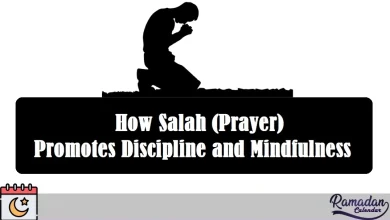The Spiritual and Physical Benefits of Salah (Prayer)
The Spiritual and Physical Benefits of Salah (Prayer) Namaz

The Spiritual and Physical Benefits of Salah (Prayer): Salah, the act of prayer, is one of the five pillars of Islam and serves as a direct link between the worshiper and Allah. It is performed five times a day and is not only an expression of devotion but also an essential means for a Muslim to maintain their spiritual and physical well-being. Despite being primarily a spiritual practice, Salah offers numerous benefits that extend beyond the act itself, impacting both the mind and body. In this article, we explore the profound spiritual and physical benefits of Salah, emphasizing its importance in fostering a balanced and healthy life.
The Spiritual Benefits of Salah
1. Strengthening the Connection with Allah
The primary purpose of Salah is to strengthen the bond between a Muslim and their Creator. Through the five daily prayers, a believer experiences a constant reminder of Allah’s presence and power. This direct communication through prayer cultivates a deep sense of humility and reverence, helping the individual to remember their dependence on Allah for everything in life.
Each prayer begins with the declaration “Allahu Akbar” (Allah is the Greatest), which serves as a powerful reminder that nothing is more significant than the worship of Allah. The consistent practice of Salah keeps a believer’s heart attuned to the spiritual dimensions of life, filling it with peace and tranquility.
2. Mental Clarity and Focus
The regularity of Salah brings a sense of structure to daily life, encouraging believers to pause, reflect, and recalibrate throughout the day. In the busy rush of life, it’s easy to become overwhelmed by the demands of work, relationships, and personal struggles. Salah acts as an anchor, a moment of pause where one can clear their mind and refocus on what truly matters.
Through its physical actions, such as standing, bowing, and prostrating, the prayer shifts the mind away from worldly distractions and brings the worshiper back to a state of mindfulness and awareness. This mental clarity is especially crucial for those facing stress or emotional turmoil, as it helps restore inner balance and perspective.
3. Gratitude and Humility
Salah serves as a consistent opportunity to express gratitude to Allah for His countless blessings, both seen and unseen. The act of bowing and prostrating symbolizes submission and humility before Allah, reminding the worshiper of their place in the grand scheme of the universe. It fosters a deep sense of humility, acknowledging that, despite life’s challenges, all goodness stems from Allah.
This practice of gratitude has been shown to improve emotional well-being, promoting contentment and reducing feelings of dissatisfaction or envy. When a person regularly reflects on the blessings in their life, they develop a mindset of appreciation rather than focusing on what they lack.
4. A Sense of Inner Peace
Salah is an opportunity to seek peace and forgiveness from Allah. It acts as a spiritual cleansing, where a believer can express remorse for any mistakes or shortcomings and ask for guidance. The repeated recitation of the Qur’an during prayer, particularly Surah Al-Fatiha, helps the individual reconnect with Allah’s mercy and compassion.
The sense of peace that arises from Salah is profound. It is not merely the absence of external noise but a deep, internal tranquility that permeates the heart and soul. This peace can carry over into daily life, making it easier to cope with difficulties, conflicts, or emotional upheaval.
How to Perform Salah (Prayer): A Step-by-Step Guide for Beginners
The Physical Benefits of Salah
While Salah is fundamentally a spiritual practice, it also offers numerous physical benefits, many of which are often overlooked. The movements in Salah, including standing, bowing, and prostrating, are a form of exercise that engages multiple muscle groups and promotes overall physical health.
1. Improved Posture and Flexibility
The act of standing upright during prayer strengthens the muscles of the back, shoulders, and legs. The bowing position (ruku’) involves bending at the waist and stretching the spine, which helps to improve flexibility and relieve tension in the lower back. Prostration (sujood), where the forehead, nose, palms, and knees touch the ground, provides a gentle stretch for the back, hips, and thighs.
Regular practice of Salah can lead to better posture, as the consistent engagement of muscles in these different positions promotes alignment and balance. For those who spend long hours sitting or standing during the day, the movements of Salah serve as a welcome break that alleviates the physical strain of poor posture.
2. Increased Blood Circulation
The different positions in Salah contribute to improved blood circulation throughout the body. For example, during sujood, the heart is at a lower position than the head, allowing for better blood flow to the brain. This position can help reduce the risk of dizziness or lightheadedness and enhance overall mental clarity.
Additionally, the cyclical nature of Salah, with its combination of standing, bowing, and prostrating, promotes healthy circulation by engaging the muscles and encouraging movement. This constant movement can also help reduce the risk of sedentary lifestyle-related issues, such as poor circulation and muscle stiffness.
3. Enhanced Breathing and Lung Capacity
The act of reciting the Qur’an during Salah, especially when combined with deep, controlled breathing, helps improve lung capacity and promotes better respiratory health. Breathing deeply during the prostration and during the periods of standing or sitting allows for a more effective exchange of oxygen and carbon dioxide in the body.
This conscious breathing has also been shown to reduce stress and anxiety, as deep, slow breaths activate the parasympathetic nervous system, which induces a state of relaxation. The rhythmic nature of Salah provides an opportunity to practice mindful breathing, which is beneficial not only for the physical body but also for emotional and mental well-being.
4. Reduced Stress and Anxiety
On a physiological level, Salah can serve as a natural stress-reliever. When performed with intention and focus, the repetitive motions and prayer recitations induce a calming effect on the mind and body. The mental clarity gained from prayer helps regulate emotions, while the physical aspects of Salah—such as prostration—can trigger a release of tension from the body.
Studies have shown that prayer and other forms of spiritual practice can reduce levels of the stress hormone cortisol, leading to improved mood and lower levels of anxiety. The act of submission to a higher power, in addition to the physical benefits, contributes to an overall sense of relief and relaxation.
Conclusion
Salah is far more than just a religious obligation—it is a source of profound spiritual and physical benefits. It fosters a deep connection with Allah, enhances mental clarity, encourages gratitude, and instills a sense of peace. On a physical level, it promotes better posture, flexibility, circulation, and stress relief. By integrating Salah into daily life, Muslims not only fulfill their spiritual duties but also improve their overall well-being, making it an indispensable practice for a balanced and healthy life.
Whether you are a beginner or a seasoned practitioner, recognizing the multifaceted benefits of Salah can motivate you to approach prayer with greater sincerity and mindfulness. It is a holistic practice that nurtures the soul, body, and mind, drawing the worshiper closer to Allah while fostering physical vitality and emotional resilience.





